Why Do Drones Fly At Night? Drones are increasingly prevalent in our skies, especially after dark, transforming various sectors from security to entertainment, as noted by experts at flyermedia.net. Exploring the reasons drones take to the night helps us understand their growing importance in aviation and beyond. This guide delves into the crucial roles drones play during nighttime operations and some new aviation careers that can be discovered through flyermedia.net, including aerial photography, surveillance, and search and rescue, offering insights into both the practical applications and the regulatory landscape.
1. What Are the Key Reasons Drones Operate at Night?
Drones operate at night for several key reasons, including enhanced surveillance capabilities, efficient search and rescue operations, and the unique opportunities for aerial photography. Night vision drones provide law enforcement with a discrete advantage for monitoring, while search and rescue teams can leverage thermal imaging to locate individuals in distress, as detailed in a study by Embry-Riddle Aeronautical University. Let’s delve into how drones are applied during the nighttime.
1.1 Enhancing Security Through Night Surveillance
Police and security agencies are increasingly relying on drones for surveillance in low-light conditions because they are equipped with advanced night vision technology. Night vision drones provide an advantage by offering high-resolution capabilities that capture detailed images even in complete darkness, which is difficult to achieve with traditional methods. Many police departments worldwide use these drones to enhance situational awareness, making it difficult for unauthorized activities to go unnoticed.
 Drones are used for night surveillance
Drones are used for night surveillance
This capability allows commanders to make quicker and more informed decisions, improving the effectiveness of security operations. The discreet nature of drones also means they can operate without alerting suspects, making them invaluable for preventing crime and ensuring public safety.
1.2 Improving Search and Rescue Missions
Search and rescue operations at night are challenging due to reduced visibility. Drones equipped with night vision and thermal imaging technology greatly enhance the ability to locate missing persons. By transmitting high-quality images and videos in real-time, these drones enable rescue personnel to quickly assess the situation and properly rescue trapped individuals faster. According to the FAA, the use of drones in search and rescue has significantly reduced response times.
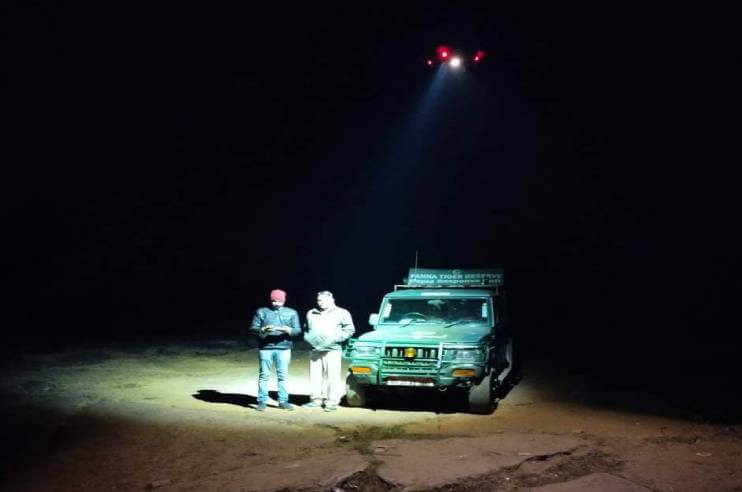 Drones are used for night search and rescue missions
Drones are used for night search and rescue missions
The deployment of flyable night vision drones equipped with thermal cameras offers a considerable advantage. It enhances night visibility and provides critical data, ensuring trapped individuals are located and rescued in a timely manner.
1.3 Nighttime Video and Photo Shooting
Drones have become essential tools in aerial photography, offering a unique perspective for capturing stunning nighttime images. With advanced night vision capabilities, drones can capture high-quality images in low-light conditions, showcasing the charm of urban landscapes and natural environments. The ability to fly and maneuver in the dark opens up new creative avenues for photographers, allowing them to explore scenes and capture perspectives previously unattainable.
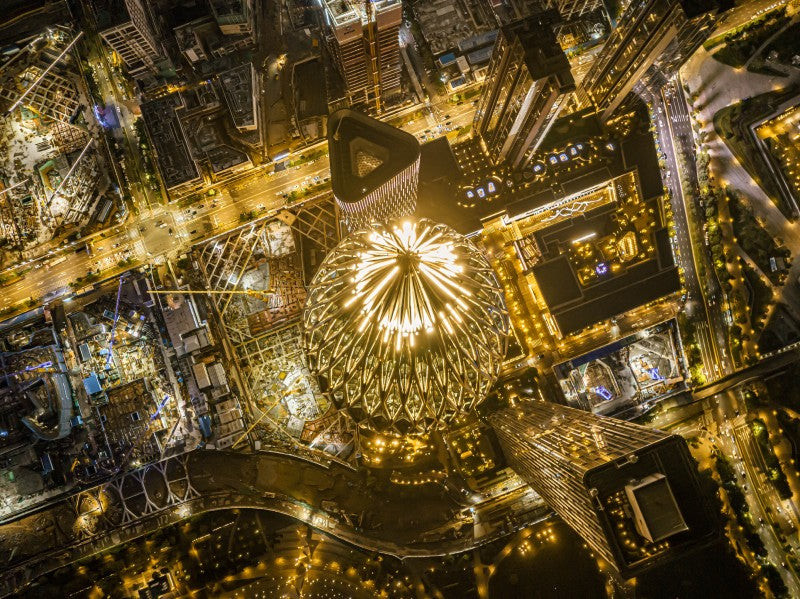 drone for night video and photo shooting
drone for night video and photo shooting
Night vision drones can capture high-quality images and showcase the charm of night drone photography. Drones equipped with high-resolution cameras and stabilized gimbals can produce sharp, clear images, capturing the beauty and detail of nighttime scenes.
1.4 Drones Used For Fighting Fires At Night
Assessing on-site conditions during nighttime firefighting missions is extremely difficult. Night vision drones equipped with thermal sensors become very useful at night as they can detect heat sources and quickly sense on-site conditions. This allows firefighters to access real-time information and make fact-based decisions on the ground. Drones provide critical support by helping rescue teams strategize effectively during operations.
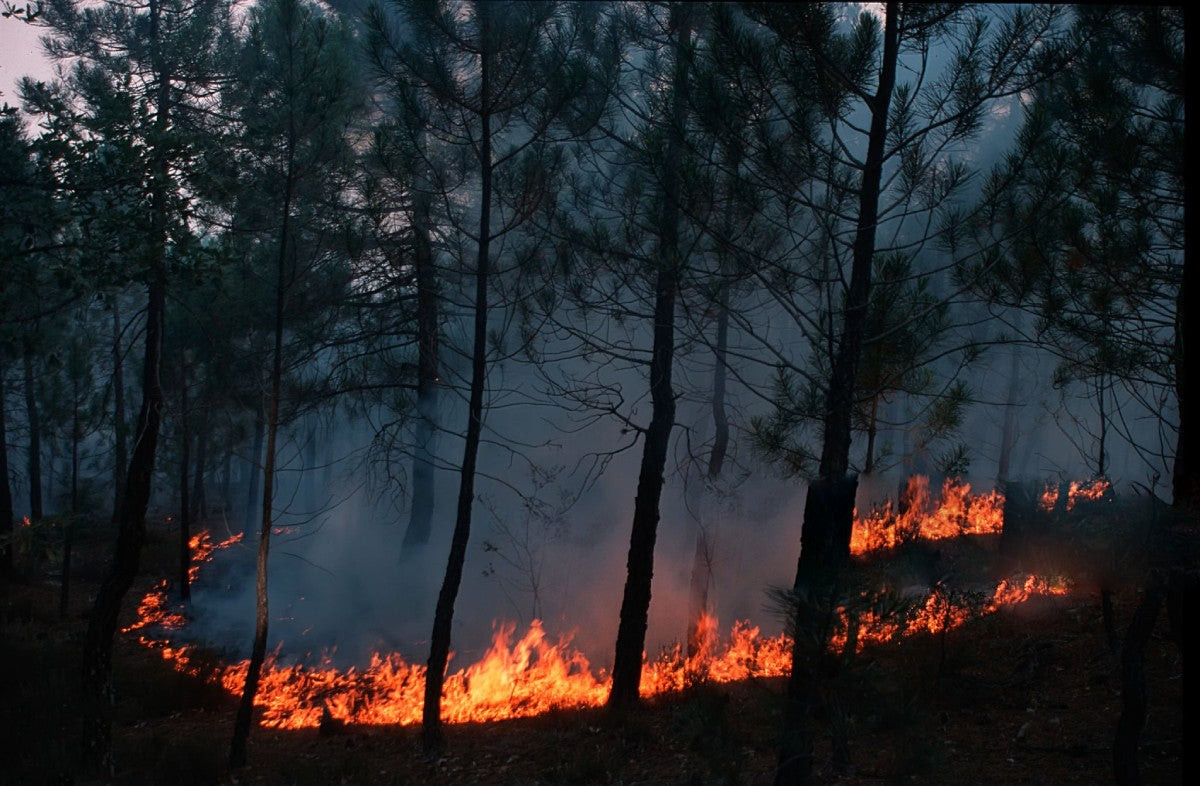 drones for night firefighting
drones for night firefighting
Equipping night vision drones with thermal sensors enhances their effectiveness in detecting and responding to fires in low visibility conditions. By providing real-time data on heat sources and fire spread, drones contribute significantly to the safety and success of firefighting operations.
1.5 Agricultural Monitoring
The agricultural industry uses drones at night to monitor crops and livestock. These drones allow farmers to track cattle and observe nocturnal animal behaviors that would be difficult to see from the ground. This technology provides valuable insights into the animals’ living habits, enabling better farm management and improved agricultural practices.
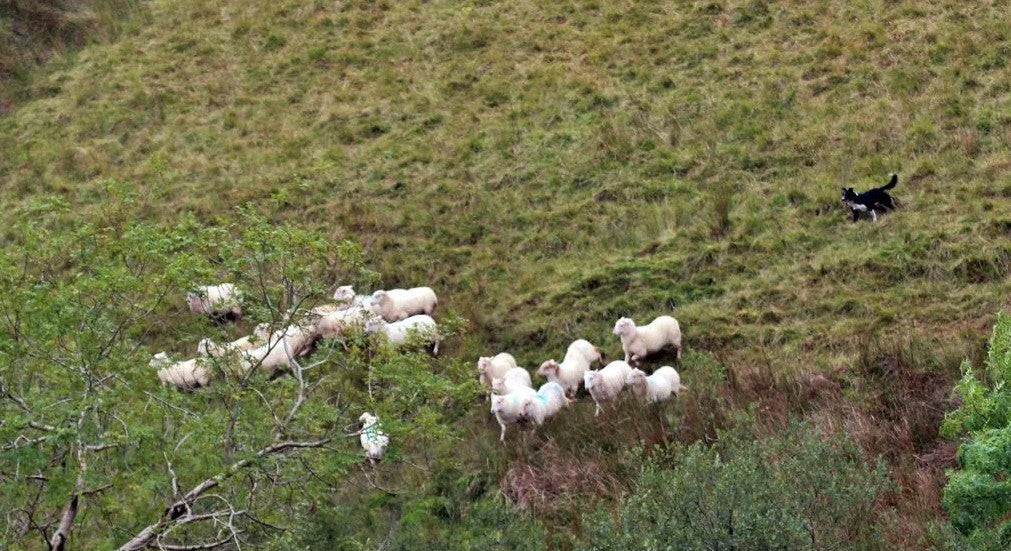 agricultural industry can use drones at night
agricultural industry can use drones at night
By using drones for nighttime monitoring, farmers can gather data on animal health, crop conditions, and potential issues. This information supports informed decision-making, optimizing agricultural outputs and ensuring sustainable farming practices.
1.6 Providing Entertainment With Drone Light Shows
Drones flying at night must have lights for navigation and warning purposes. Some people use drone lights to perform drone light shows by programming the flashing time of the drone lights. The drones can show different patterns, texts, and animation effects in the sky.
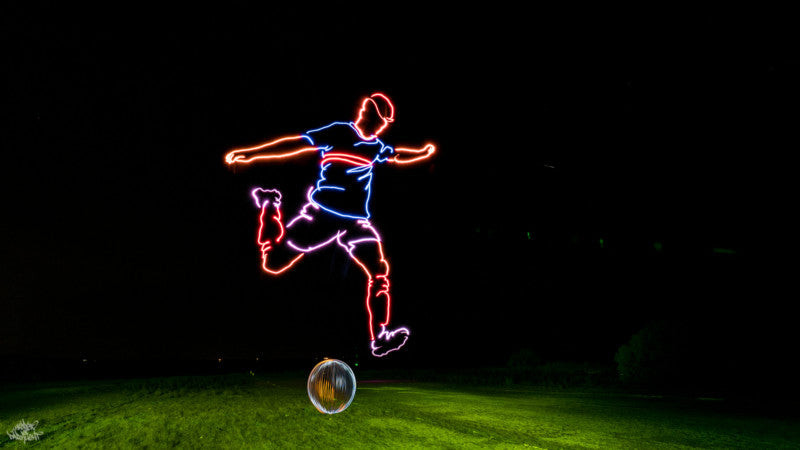 Drone Light-Painted
Drone Light-Painted
Drone light shows use drones equipped with LED lights to create aerial displays, becoming an increasingly popular form of entertainment. Programming the lights allows drones to form patterns, shapes, and animations in the sky, providing a captivating experience for audiences.
2. What are the FAA Guidelines for Night Drone Operation?
Both amateurs and professionals, including government agencies and organizations, can fly drones at night, provided they comply with FAA Rule 107 and other pertinent regulations. According to the FAA, pilots must adhere to specific guidelines to ensure safety and compliance, including equipping drones with appropriate lighting and obtaining waivers for certain operations. These regulations are crucial for integrating drones safely into the national airspace.
2.1 Understanding FAA Regulations
The FAA defines night as the time between the end of evening civil twilight (the period of sunset until 30 minutes after sunset) and the beginning of morning civil twilight (the period of 30 minutes prior to sunrise until sunrise). Drone pilots must understand and adhere to these definitions to operate legally. Compliance with FAA regulations is essential for safe and legal drone operations.
2.2 Essential Safety Precautions
Flying a drone at night carries significant risks, primarily due to reduced visibility. Pilots can easily lose sight of their drone, leading to control deviations. Therefore, equipping drones with anti-collision strobe lights is essential. These lights enhance visibility, making the drone visible to other aircraft and drone pilots, thus preventing potential collisions. According to FAA regulations, it is illegal to turn off these lights during nighttime operations.
3. What Are the Risks Associated With Nighttime Drone Flights?
Several risks are associated with flying drones at night, including loss of visibility, disorientation, and potential collisions. Loss of visibility can make it difficult for pilots to maintain control, leading to accidents. Overcoming these challenges requires advanced training, adherence to safety protocols, and proper equipment. Let’s explore in more detail the risks with nighttime drone flights.
3.1 Loss of Visibility
Reduced visibility is the primary risk associated with nighttime drone flights. Pilots may struggle to discern the drone’s orientation and position, increasing the likelihood of collisions with obstacles such as trees, buildings, and power lines. To mitigate this risk, pilots must use drones equipped with bright, FAA-approved strobe lights. These lights enhance the drone’s visibility, making it easier to track and control.
3.2 Spatial Disorientation
Spatial disorientation, or the loss of awareness of one’s position and orientation, is another significant risk during nighttime drone flights. Without visual cues, pilots may become confused, leading to incorrect control inputs and potential accidents. To prevent disorientation, pilots should rely on GPS and other navigation tools and conduct pre-flight checks to ensure all systems are functioning correctly.
3.3 Potential Collisions
The risk of collisions with other aircraft, drones, or ground obstacles increases at night due to reduced visibility. To minimize this risk, pilots should monitor airspace using ADS-B (Automatic Dependent Surveillance-Broadcast) and other tracking technologies. Staying informed about nearby air traffic allows pilots to make informed decisions and avoid potential collisions.
4. What Equipment Is Required for Flying Drones at Night?
Flying drones at night requires specific equipment to ensure safety and compliance with regulations. These include anti-collision lights, which make the drone visible to other aircraft, and advanced navigation systems to maintain control in low-light conditions. Investing in reliable equipment is crucial for safe and successful nighttime drone operations. Some of the specific equipment are explored below.
4.1 Anti-Collision Lights
Anti-collision lights are essential for nighttime drone flights. The FAA mandates that drones operating at night be equipped with lights visible from at least three miles away. These lights help other aircraft pilots and drone operators see the drone, reducing the risk of collisions. Pilots should choose lights that are bright, lightweight, and FAA-approved to ensure compliance and safety.
4.2 Advanced Navigation Systems
Advanced navigation systems, such as GPS and inertial measurement units (IMUs), are critical for maintaining control of drones at night. GPS provides accurate positioning data, while IMUs help stabilize the drone and maintain orientation. These systems enable pilots to navigate safely and precisely, even when visual cues are limited.
4.3 High-Resolution Cameras and Thermal Imaging
High-resolution cameras and thermal imaging systems enhance a drone’s ability to capture detailed images and videos in low-light conditions. High-resolution cameras provide clear visual data, while thermal imaging can detect heat signatures, making it easier to locate people or objects in darkness. These technologies are particularly useful for search and rescue operations, security surveillance, and infrastructure inspections.
5. What Training and Certifications Are Necessary for Night Drone Flights?
Pilots wishing to fly drones at night must undergo specific training and obtain the necessary certifications to ensure they can operate safely and legally. While the FAA does not require a specific night rating, pilots must pass the Part 107 knowledge test, which covers night operations. According to Embry-Riddle Aeronautical University, comprehensive training programs enhance pilots’ skills and knowledge, improving overall safety. Let’s dive deeper into what training is needed.
5.1 Part 107 Certification
The Part 107 certification is the FAA’s standard for commercial drone operations. To obtain this certification, pilots must pass a knowledge test covering various topics, including regulations, airspace, weather, and emergency procedures. While the Part 107 test covers night operations, additional training is recommended to ensure pilots are fully prepared for the unique challenges of flying at night.
5.2 Night Flight Training Programs
Night flight training programs provide pilots with hands-on experience in operating drones in low-light conditions. These programs cover topics such as night vision, spatial disorientation, emergency procedures, and risk management. Pilots who complete night flight training are better equipped to handle the challenges of nighttime operations and are more likely to operate safely and responsibly.
5.3 Continuous Education and Skill Enhancement
The field of drone technology is constantly evolving, so continuous education and skill enhancement are essential for drone pilots. Staying up-to-date with the latest regulations, best practices, and technological advancements ensures pilots maintain their skills and knowledge, improving their ability to operate safely and effectively. Attending workshops, conferences, and online courses can help pilots stay informed and connected with the drone community.
6. What are the Best Drones for Night Flying?
Selecting the right drone is crucial for successful and safe nighttime operations. Several drones are specifically designed for night flying, featuring enhanced sensors, powerful lighting systems, and stable flight capabilities. The best drones for night flying offer a combination of advanced technology, reliability, and user-friendly features. Below are some great drones.
6.1 Autel EVO Max 4N
The Autel EVO Max 4N is equipped with advanced night vision capabilities, making it an excellent choice for nighttime operations. Its high-resolution camera and thermal imaging sensors provide clear and detailed imagery in low-light conditions. The EVO Max 4N also features a powerful lighting system and stable flight performance, ensuring safe and reliable operation.
6.2 DJI Matrice 300 RTK
The DJI Matrice 300 RTK is a versatile and reliable drone suitable for a wide range of nighttime applications. Its modular design allows for the integration of various payloads, including high-resolution cameras, thermal sensors, and powerful lights. The Matrice 300 RTK also features advanced navigation systems and obstacle avoidance technology, enhancing safety and performance.
6.3 Freefly Alta X
The Freefly Alta X is a high-performance drone designed for professional aerial cinematography and industrial applications. Its robust construction and stable flight characteristics make it an excellent choice for nighttime operations. The Alta X can carry a variety of payloads, including high-resolution cameras and specialized sensors, providing detailed and accurate data in low-light conditions.
7. How Can Drones Be Used for Infrastructure Inspection at Night?
Drones are increasingly used for infrastructure inspection at night because they provide a safe and efficient way to assess bridges, power lines, and other critical assets. Equipped with high-resolution cameras and thermal sensors, drones can detect defects and anomalies that may not be visible to the naked eye during daylight hours. According to a report by the American Society of Civil Engineers, drones can significantly reduce the time and cost of infrastructure inspections.
7.1 Bridge Inspections
Drones can be used to inspect bridges at night, assessing the condition of the structure without disrupting traffic flow. Equipped with high-resolution cameras, drones capture detailed images of the bridge’s surface, identifying cracks, corrosion, and other defects. Thermal sensors can detect temperature variations, indicating potential structural issues. This data enables engineers to make informed decisions about maintenance and repairs, ensuring the safety and longevity of the bridge.
7.2 Power Line Inspections
Inspecting power lines at night is another valuable application of drones. Drones equipped with thermal sensors can detect hotspots, indicating potential faults or overloaded components. High-resolution cameras capture images of the power lines and support structures, identifying damage or deterioration. This information allows utility companies to address issues proactively, preventing outages and ensuring reliable power delivery.
7.3 Wind Turbine Inspections
Drones can also be used to inspect wind turbines at night, assessing the condition of the blades and other components. High-resolution cameras capture detailed images of the turbine’s surface, identifying cracks, erosion, and other defects. Thermal sensors can detect temperature variations, indicating potential mechanical or electrical issues. This data enables wind farm operators to schedule maintenance and repairs, optimizing turbine performance and maximizing energy production.
8. What is the Impact of Drone Technology on Aviation Careers?
Drone technology has significantly impacted aviation careers, creating new job opportunities and transforming existing roles. As drones become more integrated into various industries, there is a growing demand for skilled drone pilots, technicians, and data analysts. According to the Association for Unmanned Vehicle Systems International (AUVSI), the drone industry is expected to create thousands of jobs in the coming years. Check out flyermedia.net for drone training and career opportunities.
8.1 Drone Pilot
The most obvious career opportunity created by drone technology is the drone pilot. Skilled drone pilots are needed for a variety of applications, including aerial photography, infrastructure inspection, agriculture, and security. Drone pilots must obtain the Part 107 certification and possess strong flying skills, technical knowledge, and problem-solving abilities.
8.2 Drone Technician
Drone technicians are responsible for maintaining and repairing drones, ensuring they are safe and reliable. These technicians must have a strong understanding of drone mechanics, electronics, and software. As the drone industry grows, there is an increasing demand for skilled technicians to keep drones in optimal condition.
8.3 Drone Data Analyst
Drone data analysts process and interpret the data collected by drones, providing valuable insights to businesses and organizations. These analysts must have strong analytical skills, technical knowledge, and the ability to work with large datasets. Drone data analysis is used in a variety of applications, including agriculture, construction, and environmental monitoring.
9. What Are the Ethical Considerations of Night Drone Operations?
Operating drones at night raises several ethical considerations that must be addressed to ensure responsible and lawful use. These considerations include privacy concerns, noise pollution, and potential safety hazards. Balancing the benefits of drone technology with the need to protect individual rights and public safety is essential. Let’s explore these considerations in detail.
9.1 Privacy Concerns
One of the primary ethical concerns associated with night drone operations is the potential for privacy violations. Drones equipped with high-resolution cameras and thermal sensors can capture images and data that may infringe on individuals’ privacy. To address this concern, drone operators must adhere to privacy laws and regulations, such as obtaining consent before collecting data on private property and avoiding surveillance of private activities.
9.2 Noise Pollution
Noise pollution is another ethical consideration of night drone operations. Drones can generate significant noise, disturbing residents and disrupting wildlife. To minimize noise pollution, drone operators should use quieter drones, avoid flying over residential areas at low altitudes, and adhere to noise restrictions imposed by local authorities.
9.3 Safety Hazards
Safety hazards are a significant ethical consideration of night drone operations. Operating drones at night carries increased risks due to reduced visibility and potential collisions. To mitigate these risks, drone operators must ensure they have the necessary training, equipment, and safety protocols in place. This includes equipping drones with anti-collision lights, using advanced navigation systems, and conducting thorough pre-flight checks.
10. What are the Future Trends in Night Drone Technology?
Night drone technology is rapidly evolving, with new advancements promising to enhance capabilities, improve safety, and expand applications. Future trends in night drone technology include enhanced sensors, autonomous flight capabilities, and integration with artificial intelligence (AI). These advancements will enable drones to perform more complex tasks, operate in challenging environments, and provide valuable data to businesses and organizations.
10.1 Enhanced Sensors
Future drones will be equipped with enhanced sensors, such as high-resolution cameras, LiDAR (Light Detection and Ranging), and hyperspectral imagers. These sensors will provide more detailed and accurate data, enabling drones to perform more sophisticated tasks, such as 3D mapping, precision agriculture, and environmental monitoring.
10.2 Autonomous Flight Capabilities
Autonomous flight capabilities will enable drones to operate without human intervention, reducing the need for skilled pilots and improving efficiency. Drones will be able to navigate complex environments, avoid obstacles, and make decisions based on real-time data. Autonomous flight capabilities will be particularly useful for applications such as package delivery, infrastructure inspection, and search and rescue.
10.3 Integration with Artificial Intelligence (AI)
Integration with AI will enable drones to analyze data in real-time, make predictions, and adapt to changing conditions. AI-powered drones will be able to identify patterns, detect anomalies, and provide actionable insights to businesses and organizations. This technology will be particularly useful for applications such as security surveillance, traffic management, and disaster response.
In summary, understanding why drones fly at night reveals their expanding role in various sectors. These range from enhancing security and enabling search and rescue missions to providing unique opportunities for aerial photography. Adhering to FAA regulations and investing in proper training and equipment are crucial for safe operations, highlighting the importance of responsible drone use.
As the drone industry evolves, new career paths are emerging, offering exciting opportunities for skilled professionals. For more information on drone technology, training programs, and career opportunities, visit flyermedia.net today and take your passion for aviation to new heights.
FAQ: Unveiling the Mysteries of Night Drone Flights
Here are some frequently asked questions about drones flying at night, providing more insight into why and how they operate after dark.
1. Is it legal to fly a drone at night?
Yes, it is legal to fly a drone at night in the U.S., but you must adhere to FAA guidelines, including equipping your drone with anti-collision lights.
2. What kind of lights are required for night drone flights?
Drones must be equipped with lights visible from at least three miles away to ensure they are seen by other aircraft.
3. Can drones be used for search and rescue at night?
Yes, drones equipped with thermal imaging cameras are highly effective for locating missing persons in nighttime search and rescue operations.
4. What are the best drones for night flying?
The Autel EVO Max 4N, DJI Matrice 300 RTK, and Freefly Alta X are excellent choices for night flying due to their advanced sensors and stable flight capabilities.
5. How do drones help with firefighting at night?
Drones equipped with thermal sensors can detect heat sources and provide real-time data to firefighters, improving their ability to assess and manage fires.
6. What is the impact of drone technology on aviation careers?
Drone technology has created new job opportunities, including drone pilots, technicians, and data analysts, transforming the aviation industry.
7. What ethical considerations should be taken into account when operating drones at night?
Ethical considerations include privacy concerns, noise pollution, and ensuring safety to protect individual rights and public well-being.
8. What training is required to fly drones at night?
Pilots must pass the Part 107 knowledge test and are encouraged to participate in night flight training programs for hands-on experience.
9. How can drones be used for infrastructure inspection at night?
Drones with high-resolution cameras and thermal sensors can efficiently inspect bridges, power lines, and wind turbines, detecting defects not visible during the day.
10. What are the future trends in night drone technology?
Future trends include enhanced sensors, autonomous flight capabilities, and integration with artificial intelligence, improving drone capabilities and expanding their applications.
Ready to explore the world of drones further? Visit flyermedia.net to discover more about drone technology, training programs, and exciting career opportunities in aviation. Take the first step toward realizing your aviation dreams today. Our address is 600 S Clyde Morris Blvd, Daytona Beach, FL 32114, United States. You can also reach us by phone at +1 (386) 226-6000. We look forward to helping you soar to new heights!